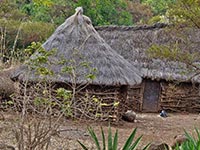
Northern Tanzania Circuit is a favoured route for holidaymakers and explorers...
Tanganyika (as it was originally known) was granted independence from Great Britain on 9th December 1961. In 1964 Tanganyika joined up with Zanzibar and then changed its name to the United Republic of Tanzania which is a blend of the two countries' names. Today, it is known as Tanzania.

Tanzania boasts 947,300 km² of incredible land and is the world’s 31st largest country and Africa’s 15th largest country. It is slightly smaller than Egypt but similar in size to Nigeria. There are eight other African countries on the borders of Tanzania; Kenya, Uganda, Rwanda, Burundi, The Democratic Republic of the Congo, Zambia, Malawi and Mozambique. It has a population of approximately 50.1 million people.

Tanzania is a vibrant country with incredible landscape. Toward the North East it is mainly mountainous and that’s where you will find Mount Kilimanjaro, the highest mountain in Africa. The Great Lakes are situated in the North and the West, Lake Victoria is Africa’s largest lake and Lake Tanganyika is Africa’s deepest lake, renowned for unique species of fish. In the South West of the country lies a third large lake, Lake Nyasa.

The Menai Bay Conservation Area in Zanzibar is the area’s largest marine protected area and home to many species of tropical fish, dolphins, whales and coral reefs. It is the ideal diving and snorkelling destination, opening up a world of colourful marine life..

The central area of Tanzania is made up of a generous plateau, full of plains and arable land. The East of the country is hot and humid and Zanzibar lays just offshore.

Situated within the Ngorongoro Conservation Area one can experience a culture difference in a Village which is home to the Maasai tribe. Despite significant environmental threats to their existence they have managed to hold on to their heritage. They are known as Tanzania’s nomadic, peaceful warriors. In this area you’ll see Maasai Bomas (the tribe’s traditional housing), Maasai dancing and experience Maasai culture which is warm and welcoming.

The area is an abundant spectacle of breathtaking landscape, plains, mountains, wildlife and birdlife. The government of Tanzania promote the Maasai village as an area of integrity and high diversity and it’s a must-see destination. Additionally, this area is home to Olduvai Gorge also know as "Cradle of mankind". Both of these are renowned for their cultural, ecological and geological value.
The economy is mainly based on the country’s rich and fruitful agriculture which accounts for more than half of the gross domestic product and provides approximately 75% of exports. Agriculture is the main form of employment representing 75% of the country’s workforce. Export products include:
Tanzania has so much to offer a holidaymaker and intrepid explorer, boasting some of the most spectacular National Parks in the whole of Africa. Each park is different and there's much to explore.